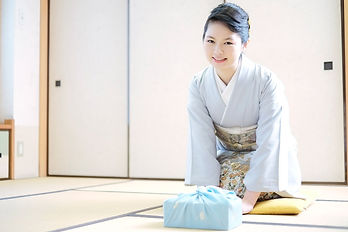Greeting / 挨拶
Greeting / 挨拶
Greeting / 挨拶
Greeting / 挨拶
Greeting / 挨拶
Greeting / 挨拶
Greeting / 挨拶
Greeting / 挨拶

Greeting / 挨拶
もくじ
1) Simple greeting/ 簡単な挨拶
2) One Point: What "Yoroshiku" is!
Thank you for your cooperation / よろしくお願いします
e.g.
A) As "Nice to see you."
B) As "Thank you for your cooperation."
C) As "Let's do our best together. ( I'm looking forward to working with you.)"
D) As "Best regards"
1) Simple Greeting / 簡単な挨拶
おはようございます/Good morning
こんにちは/Hello, Good afternoon
こんばんは/Good evening
おやすみなさい/Good night
ありがとうありがとうございます/Thank you very much
はじめまして/Nice to see you. (But when to see him/her for the first time.)
お会い(おあい)できるのを楽しみ(たのしみ)にしておりました。/
I was looking forward to seeing you.
お会い(おあい)できてうれしいです。/I am pleased to see you.
よろしお願い(おねがい)します。/It is a pleasure to meet you.
2) One point to learn "よろしく"
"Yoroshiku" is a very useful and convenient word, but it has many meanings. Let's try to learn how to use it. The word "Yoroshiku" is a word you add when you show your hospitality, gratuitous, affection to someone (goodwill gesture), or ask for something (as a favor). It is a combination of "onegai," which is a polite expression of "wish," and "shimasu," which is an honorific expression. It is used as a greeting to those who are usually or will be indebted to you, or to make a polite request in response to your wish.
The word "Yoroshiku" can be used in different ways depending on the situation, such as in daily life or in business. Let's take a look at some examples.
”よろしく”は非常に便利な言葉ですが、多くの意味があります。 使い方を習得してみましょう。
”よろしく”は人に好意を示したり、何かを頼んだりするときに添える言葉です。そのあとに続いて”願い”の丁寧表現である”お願い”と「します」を組み合わせた敬語表現となっています。普段または、これからお世話になる方々への挨拶であったり、こちらからの希望に対して丁寧に依頼する意味で用いられます。
”よろしく”は日常生活とビジネスなど状況によって使い分けられます。 その例をみてみましょう。
”よろしく”はひじょうにべんりなことばですが、おおくのいみがあります。 つかいかたをしゅうとくしてみましょう。
”よろしく”はひとにこういをしめしたり、なにかをたのんだりするときにそえることばです。そのあとにつづいて”ねがい”のていねいひょうげんである”おねがい”と「します」をくみあわせたけいごひょうげんとなっています。ふだんまたは、これからおせわになるかたがたへのあいさつであったり、こちらからのきぼうにたいしてていねいにいらいするいみでもちいられます。
”よろしく”はにちじょうせいかつとびじねすなどじょうきょうによってつかいわけられます。 そのれいをみてみましょう。


e.g. 例(れい)
A) As "Nice to see you."
"Hajimemasite, Yoroshiku onegaishimasu." When translating into English, it just shows "Nice to meet you." But this sentence in English does not include "It is the first time to see you" as the original phrase "Hajimemasite - It is the first time-." Yoroshiku onegaishimasu" after "Hajimemasite" in this sentence means "Please be nice (to become friendly, or to be sociable with -like friendships-) and keep in touch with me from now."
”はじめまして、よろしくお願いします。" この英文にははじめましてが含まれていません。また、ここで示されている”はじめまして、よろしくお願いします”は、"この度あなたにお会いすることが初めてです。今後とも親しくしてください。”という意味が含まれています。
”はじめまして、よろしくおねがいします。" このえいぶんにははじめましてがふくまれていません。また、ここでしめされている”はじめまして、よろしくおねがいします”は、"このたびあなたにおあいすることがはじめてです。こんごともしたしくしてください。”といういみがふくまれています。
B) As "Thank you for your cooperation."
After a conversation, Japanese often say, "Yoroshiku Onegagaishimasu - Thank you for your time (or listening to me)." It is also common to say, "I look forward to working with you". Also, after meeting someone for the first time and introducing yourself for the first time, you end by saying, "Yoroshiku onegaishimasu" as "Please keep in touch with me. (or please take care of me though non-Japanese may feel strange to hear that meaning.) After introducing yourself in front of a group of people at school or work, this is often used as the last word to wrap up the speech.
よろしくお願い致します。
会話の後、日本人はよく "よろしくお願いしますと言います。 - お時間を頂き(または私の話を聞いて頂き)ありがとうございます"という感謝の代わりとして述べます。 また、"一緒に仕事をすることを楽しみにしております "という意味を込めて言うこともよくあります。
また、初対面で自己紹介をした後、最後に”よろしくお願いします"と言います。(海外の方々にとって"私の面倒をみてください"と解釈されるのは違和感があるかもしれませんが。) 学校や職場で大勢の人の前で自己紹介をした後、スピーチを締めくくる最後の言葉としてもよく使われます。
よろしくおねがいいたします。
かいわのあと、にほんじんはよく "よろしくおねがいしますといいます。 - おじかんをいただき(またはわたしのはなしをきいていただき)ありがとうございます"というかんしゃのかわりとしてのべます。 また、"いっしょにしごとをすることをたのしみにしております "といういみをこめていうこともよくあります。
また、しょたいめんでじこしょうかいをしたあと、さいごに”よろしくおねがいします"といいます。(かいがいのかたがたにとって"わたしのめんどうをみてください"とかいしゃくされるのはいわかんがあるかもしれませんが。) がっこうやしょくばでおおぜいのひとのまえでじこしょうかいをしたあと、すぴ-ちをしめくくるさいごのことばとしてもよくつかわれます。
C) As "Let's do our best together. ( I'm looking forward to working with you.)"
Here, it can be taken as an encouragement to work hard together, or as its appreciation for your valuable time.
ここでは「一緒にがんばりましょう」という激励や「貴重な時間をありがとう」という感謝としてとらえられます。
ここでは「いっしょにがんばりましょう」というげきれいや「きちょうなじかんをありがとう」というかんしゃとしてとらえられます。
D) As "Best regards"
In Japanese business e-mails, the sentence is often concluded with "Yoroshiku onegaishimasu" which meant as I look forward to hearing from you soon" closing the sentence.
日本(にほん)のビジネスメールでは、最後に頻繁に「よろしくお願いします。」という言葉で文章を締め括ります。
にほんのじねすめ-るでは、さいごにひんぱんに「よろしくおねがいします。」ということばでぶんしょうをしめくくります。
